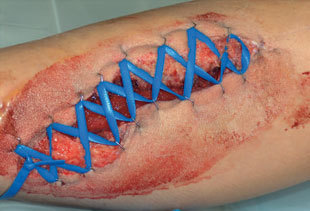Here we go again. Yet another paper debating whether we really need to have a trauma surgeon in-house at high level trauma centers. A paper published in December 2013 looks at this topic, and is a perfect illustration of why you need to read the whole article, not just the abstract!
This retrospective study primarily examined patient mortality, as well as a few other LOS indicators. They compared their results as they changed from having trauma surgeons who took call from home to taking in-house call. It involves only one trauma center in Lexington, Kentucky and covers two 21 month periods.
Here are the factoids:
- There were roughly 5000 patients each in the at-home and in-house groups
- Overall demographics looked identical, even though the authors thought they detected differences in age and ISS
- Time in ED, ICU LOS, hospital LOS decreased significantly, and percent taken to OR increased in the in-house group. There was no change in mortality.
- These patterns were the same in trauma activation patients, who were obviously more seriously injured.
- The authors conclude that having an in-house surgeon does not impact survival, but can speed things up for patients throughout their hospital stay.
I have many problems with this study:
- The statistical results are weird. Many of the allegedly significant differences appear to be identical (e.g. mean age 44+/-19 vs 45+/-19, hospital LOS 3 days vs 3 days). And even if the authors found a test that makes them look statistically significant, they are clinically insignificant. ICU LOS differences were measured in hours, and 25 hours was significant?
- Attending presence “improved” from 51% to 88%. This means that they were not present in 1 of 5 trauma activations. This can easily overshadow any positive effect their presence may have had.
- Mortality is too crude an indicator to judge the value of surgeon presence.
- Lengths of stay can be due to so many other factors, it is not a valid measure either.
- A retrospective, registry study has too few of the really critical data points
Bottom line: This paper is the poster child for why you MUST read the full paper, not just the abstract. If you had done the latter, you may believe that having an in-house surgeon is not necessary. Many papers (of variable quality) have looked at this (poorly) and there is no consensus yet. But it is a requirement for ACS verification if the surgeon can’t make it to the bedside of a seriously injured patients within 15 minutes.
After observing trauma activations for 32 years, I know there is value in having an experienced surgeon present at the bedside during them. However, this value is very hard to quantify and every paper that has tried has not looked at the right variables. And these variables cannot be assessed in a retrospective, registry type study.
Yes, there is no good, hard evidence of the value of the in-house surgeon. But it is there. Let’s stop publishing (and not critically reading) this kind of junk and confusing the issue!
Reference: Influence of In-House Attending Presence on Trauma Outcomes and Hospital Efficiency. J Am College Surg 281(4):734-738, 2013.


